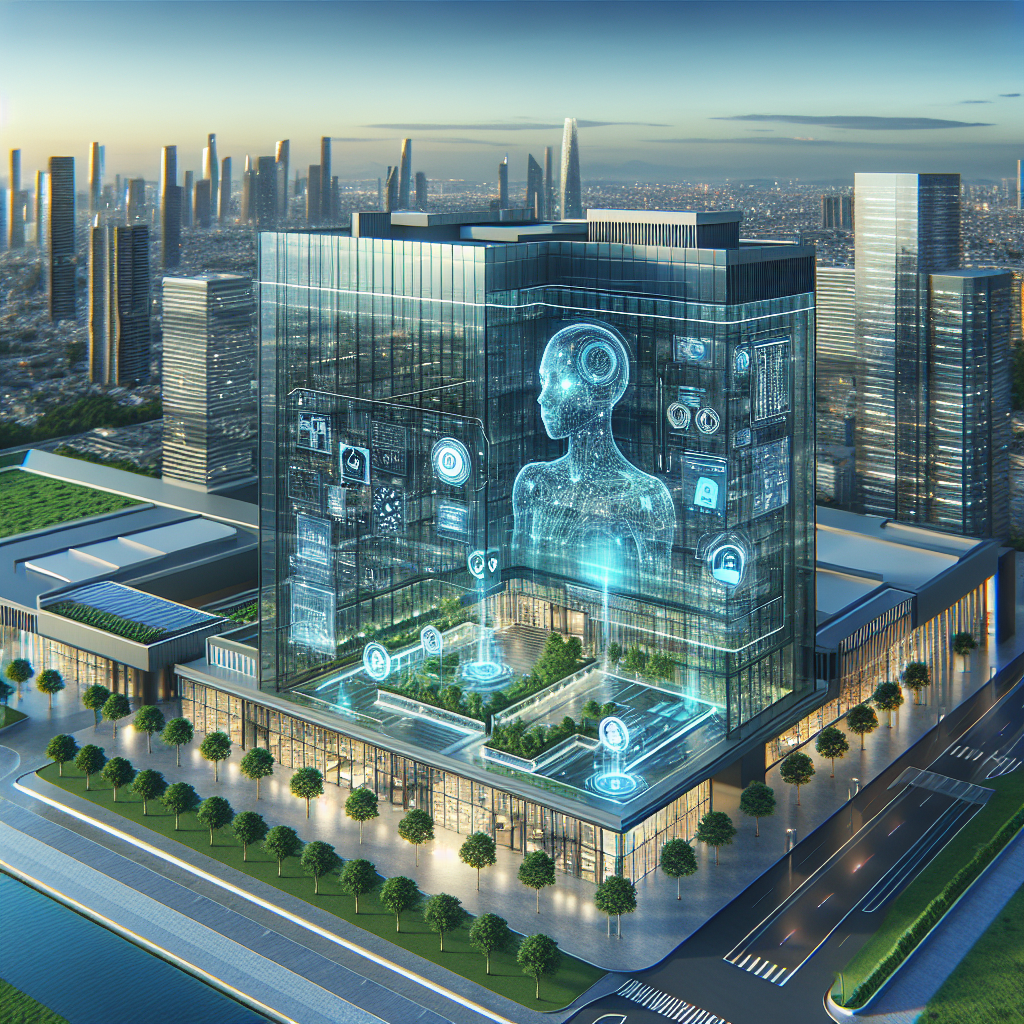Artificial Intelligence (AI) has been revolutionizing various industries, and architecture is no exception. The integration of AI in architecture is redefining the concept of smart buildings, making them more efficient, sustainable, and user-friendly. From design to construction and operation, AI is transforming every aspect of the architectural process. In this article, we will explore how AI is reshaping the architecture industry and the potential benefits it offers.
The Role of AI in Architecture
AI is playing a significant role in reshaping the architecture industry by automating repetitive tasks, improving design accuracy, and enhancing building performance. Architects can now leverage AI-powered tools to generate design options, analyze data, and optimize building performance. AI algorithms can process vast amounts of data and generate insights that can help architects make informed decisions.
One of the key areas where AI is making a difference in architecture is in the design process. AI-powered design tools can generate numerous design options based on specific parameters and constraints. These tools can analyze data from previous projects, building codes, and environmental factors to create designs that are optimized for performance and sustainability. Architects can explore various design options quickly and efficiently, saving time and resources in the process.
AI is also being used in construction to improve efficiency and safety. Construction companies are using AI-powered drones and robots to monitor construction sites, inspect buildings, and track progress. These technologies can help detect potential safety hazards, identify defects, and ensure that construction projects are completed on time and within budget. AI can also optimize construction schedules and resource allocation, leading to cost savings and improved project outcomes.
In the operation phase, AI is being used to optimize building performance and energy efficiency. AI-powered building management systems can monitor and control building systems, such as heating, ventilation, and air conditioning (HVAC), lighting, and security. These systems can learn from data patterns and user behavior to adjust settings automatically and optimize energy usage. By using AI to manage building operations, owners can reduce energy costs, improve occupant comfort, and extend the lifespan of building systems.
Benefits of AI in Architecture
The integration of AI in architecture offers a wide range of benefits for architects, construction companies, building owners, and occupants. Some of the key benefits include:
1. Improved design efficiency: AI-powered design tools can help architects generate and evaluate design options quickly, allowing them to explore more possibilities and make better design decisions.
2. Enhanced building performance: AI can optimize building performance by analyzing data and adjusting building systems to maximize energy efficiency, comfort, and safety.
3. Cost savings: AI can help reduce construction costs by optimizing schedules, resource allocation, and material usage. AI-powered building management systems can also reduce energy costs and maintenance expenses.
4. Sustainability: AI can help architects design buildings that are more sustainable and environmentally friendly by optimizing energy usage, reducing waste, and minimizing carbon emissions.
5. User experience: AI-powered building management systems can improve the user experience by optimizing indoor environmental quality, comfort, and security.
FAQs
Q: How is AI being used in architectural design?
A: AI is being used in architectural design to generate design options, analyze data, and optimize building performance. AI-powered design tools can help architects explore various design possibilities quickly and efficiently.
Q: How does AI improve building performance?
A: AI can optimize building performance by analyzing data from building systems, sensors, and user behavior to adjust settings automatically and optimize energy usage. AI-powered building management systems can help reduce energy costs, improve occupant comfort, and extend the lifespan of building systems.
Q: What are some examples of AI applications in architecture?
A: Some examples of AI applications in architecture include AI-powered design tools, construction monitoring drones and robots, and building management systems that optimize building performance and energy efficiency.
Q: How can AI help architects save time and resources?
A: AI can help architects save time and resources by automating repetitive tasks, generating design options, and analyzing data. AI-powered tools can help architects make informed decisions quickly and efficiently.
Q: What are the potential challenges of integrating AI in architecture?
A: Some potential challenges of integrating AI in architecture include data privacy and security concerns, the need for specialized skills and training, and potential biases in AI algorithms. Architects and designers need to be aware of these challenges and take steps to address them.
In conclusion, AI is redefining the concept of smart buildings in architecture by improving design efficiency, enhancing building performance, and optimizing user experience. The integration of AI in architecture offers a wide range of benefits for architects, construction companies, building owners, and occupants. By leveraging AI-powered tools and technologies, architects can create buildings that are more sustainable, efficient, and user-friendly. As AI continues to advance, the future of architecture will be shaped by intelligent design solutions that push the boundaries of innovation and creativity.

